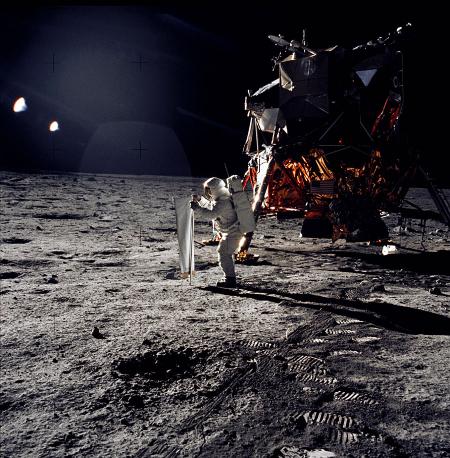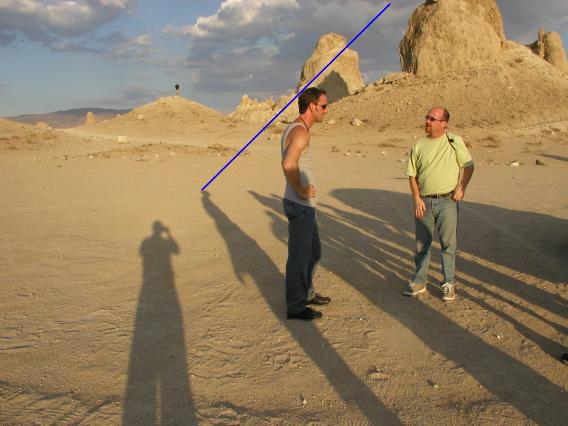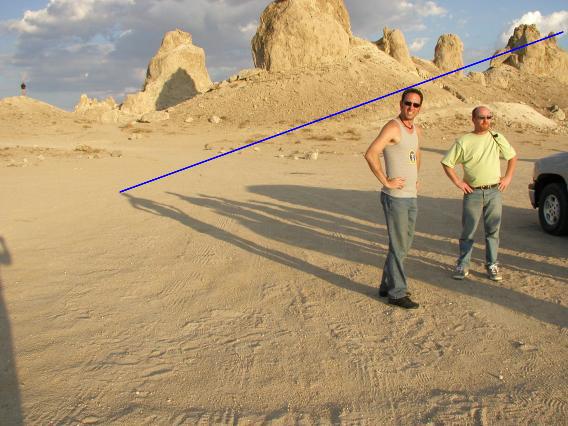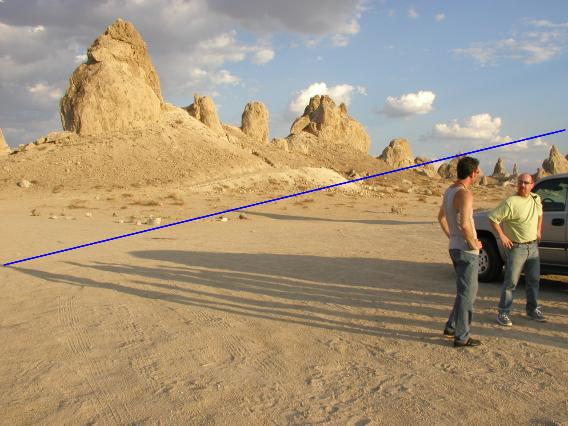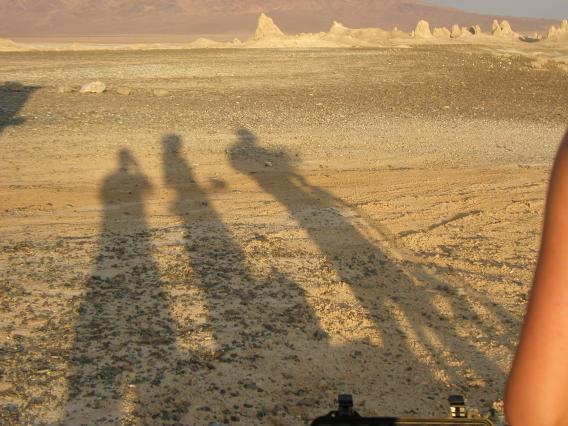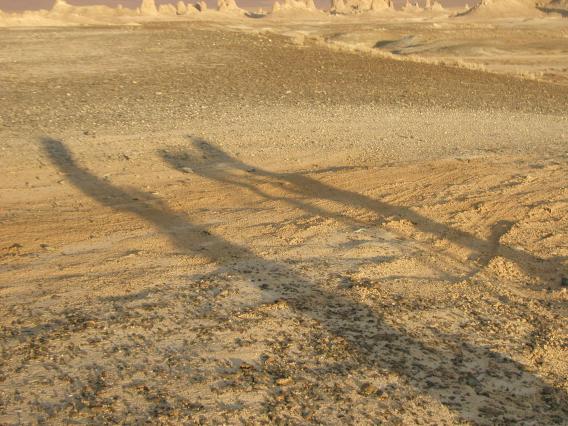the truth behind the moon landings







|
This and the following pages describe the webmaster's involvement with the production of The Truth Behind the Moon Landings from Zig Zag Productions. The webmaster participated in only one segment of the program. Not all of our tests were done under the studio light. We spent considerable time in the desert during the daytime and took special advantage of the low sun elevation in the evening to create some sun-cast shadows under conditions that mimic those on the lunar surface.
|
|
The conspiracists tell us that photos like Fig. 1 are improbable because they show "sun angles" of some 26° when the sun angle should be more like 13° for Apollo 11.
A detailed explanation of just what's wrong with that argument is found on the photo analysis page. Briefly, the conspiracists extract the "sun angle" by drawing a line from the top of the object to the tip of its shadow (regardless of the view angle) and insist that the angle formed by this line and some other line is the "sun angle" (more properly the sun elevation).
In the sun, with a low sun elevation, on reasonably flat and level ground, we can examine one of the factors that affects the geometrical solution the conspiracists offer.
|
|
|
According to the conspiracists' line of reasoning, the "sun angle" in Fig. 2 should be about 45° (as measured from the image horizontal). But by Fig. 4 -- just by changing the photographer's position -- the "sun angle" has decreased to less than 30° (as measured the same way).
If differences in "sun angle" as great as 15° can be shown simply by changing the photographer's position, then this isn't a very good method of determining the sun's elevation angle. And in fact real photo analysts know that you can't determine the sun's elevation by this method, precisely because the effect of perspective has to be taken into account.
A method called "vanishing point analysis" exists to determine the
sun elevation from shadows in a photograph, provided that the
theoretical horizon -- which isn't necessarily the horizon you see in
the picture -- can be determined. If the ground is known to be flat
and level, you can use the terrain horizon as the theoretical horizon.
SHADOW AND TERRAIN
REVISITED
We have shown elsewhere that terrain and texture have a marked effect on the apparent shape, size, and direction of a shadow.
|
In Fig. 5 the photographer shoots directly down-sun. His shadow and those of his colleagues appear largely undistorted. The sun elevation is quite low here.
|
Now in Fig. 6 the shadows are seen from a different angle -- a broader phase angle. The small effects of footprints and other texture elements can be seen. The dip that crosses the shadows transversely is now evidenced by the spoon-like curve of the shadows near the ends. When shadows "straddle" features like this, the shape of the shadow gives cues about the contour of the surface. But when one shadow lies on one side of a discontinuity and another separate shadow lies on the other side of it, the shadows will appear to lie in different directions when seen from most view angles. This is often the source of apparently mismatched shadows in Apollo photography.
 But aren't you just
proving that Apollo photography could be faked on Earth?
But aren't you just
proving that Apollo photography could be faked on Earth?